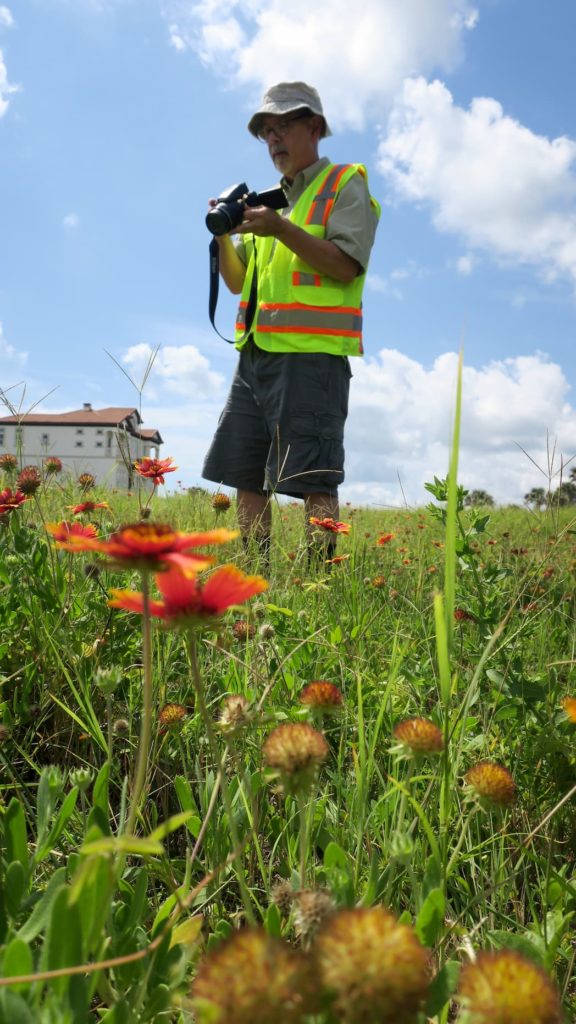Fall news from PWA counties
Waiting for Monarchs
As summer winds down in North Florida, roadsides and many of our gardens are full of colorful pollinators flitting from bloom to bloom. What a treat to see our conservation efforts pay off with the joyous dance of butterflies, bees and wildflowers.
I’m writing this newsletter from the mountains of western North Carolina, where the annual Monarch butterfly migration is expected to arrive soon. I found an informational sign on the Blue Ridge Parkway at the Cherry Gap overlook (altitude 4,327 feet) outlining the annual trek of the Monarch in mid-September as they pass through a gap in the mountains on their way south. It’s exciting to think about these butterflies, which may be some of the same ones that arrive along Florida’s Panhandle a month or so from now. Thanks to your efforts, the Panhandle’s wildflowers are ready to greet them.
If you’re just starting to delve into the whys of wildflowers or need a refresher, take time to watch a recording of the Foundation’s Sept. 15 webinar about why saving roadside wildflowers is so vital to Florida’s natural future. In it, Master Gardener Suzanne Spencer and I explain how to build support within your county to save naturally occurring wildflowers along roadsides. Suzanne shares the success of the Santa Rosa County Master Gardeners program in saving 70 miles of wildflowers and taxpayer dollars. Watch it now on the Foundation’s website.
Conserving corridors of pollinator habitat is a win for wildflowers, farmers and the community! Visit the Florida Wildflower Foundation website to learn how to conserve wildflowers in your county.
– Liz Sparks, FWF Regional Alliance Liaison
Bob Farley leaves FDOT District 3
Bob Farley’s contract as a vegetation management specialist with FDOT District 3 ended recently. Since September 2014, he has been a wonderful resource, heavily involved in the implementation of FDOT’s Wildflower Program in District 3’s 16 counties (from Escambia east to Jefferson).
Dustie Moss, FDOT District 3 wildflower coordinator, said Bob’s tremendous knowledge of native wildflowers, plants and grasses contributed greatly to the Wildflower Program’s success in the district. “With the vast knowledge of plant habitat that Bob possessed, we proved to be successful. Bob was like none other. He provided a unique understanding of roadside vegetation activities and ensured adequate maintenance of those activities occurred. He was a dynamic piece of the puzzle in District 3’s award-winning Wildflower Program.”

The Florida Wildflower Foundation and Bob’s many wildflower friends appreciate all he has done to conserve the Panhandle’s outstanding wildflowers. We wish him the best of luck in future endeavors.
As an art student in 1973, Bob closely followed the career of land artist Robert Smithson. “His essay, ‘Frederick Law Olmstead and the Dialectical Landscape’ is still top on my list of re-reads,” he said last summer.
FDOT’s “BOLD” landscape vision in 2014 gave Bob new direction when he was instructed to “paint the district” by then District Maintenance Engineer Mark Thomas. “The results were enthusiastically received by the motoring public, and I was passionately inspired,” he remembers.
That vision soon morphed into a new challenge: creating natural artworks comprised of sustainable native habitats. “To that end, District 3 recently has embarked on a multiyear project to restore hurricane damaged landscapes in the medians of Interstate 10 in Jackson County with sustainable habitats of native plants that require only periodic maintenance,” Bob says.
The Florida Wildflower Foundation and Bob’s many wildflower friends appreciate all he has done to conserve the Panhandle’s outstanding wildflowers. We wish him the best of luck in future endeavors.
Panhandle Wildflowers on Flickr
Every month, Eleanor Dietrich, Tallahassee, uploads stunning wildflowers photos and short essays (which can be viewed by clicking on the photos), to her Flickr account, a wonderful feature to share with the wildflower community. Follow her and learn what’s in bloom throughout the year.
The Foundation also has a robust presence on Flickr. Check out www.Flickr.com/flawildflowers and join its Flickr group to contribute photos.
What’s Happening Around the Panhandle
Calhoun County
Much appreciation goes to Travis and Karen MacClendon for continuing to maintain the Blountstown Depot Garden next to the Blountstown Greenway trailhead during their weekly visits in steamy summer conditions. They also have been collaborating with Eleanor Dietrich to provide photographs of pollinators visiting the garden. Eleanor shares the photos in a weekly column about Panhandle wildflowers in the local Calhoun-Liberty Journal.
“In the Blountstown Garden, hogs had visited recently but fortunately no plantings were uprooted or dying. Cory Capps with the City may try putting out the county hog trap,” report Travis and Karen.
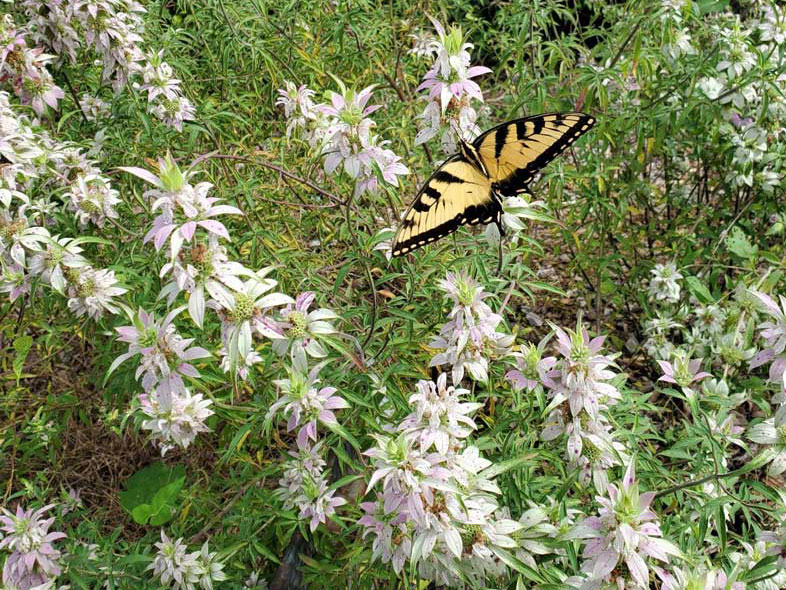
by Karen MacCLendon
Franklin County
Anita Grove, the new leader of Franklin County wildflower program, is creating wildflower seed packets for a seed library. They will be distributed at either the Apalachicola National Estuarine Research Reserve or the Eastpoint Library, which are shut down due to the pandemic. Anita will post on Panhandle Wildflower Alliance Facebook page when seed packets are available.
Gadsden County
by Nancy Jones
Mary Howard agreed to be the Gadsden County volunteer leader after attending a panel discussion at the Gadsden Arts Center last spring. She was inspired by Eleanor Dietrich, a panelist who spoke on wildflowers and all the benefits they provide the natural world. In February, Mary went to her first Audubon meeting and was alarmed to learn that birds and bees are losing habitat at an alarming rate, but conserving wildflower habitat can give them a chance. She asks “Why aren’t we using these easy remedies for our pollinators?”
A Gadsden Wildflower Resolution was passed by Gadsden County commissioners in 2009, but no community leader emerged and the program never got off the ground. Last month, the resolution was brought before the board to amend it with a request to reduce mowing on three county roads with remnant wildflower populations. The roads were identified during a 2019 survey by Jeff Norcini, Scott Copeland and Greg Jubinsky.
Gulf County
by Nancy Jones
In Gulf County we have the opportunity to expand our reduced mowing program by recommending some new roads for consideration. Two roads were surveyed this summer for possible inclusion — State Road 71 from Port St. Joe to the White City bridge, and County Road 387 to Howard’s Creek. The trip along C.R. 387 is delightful. Ditches along the road support many native wetland plants and grasses. The road ends at Brothers River, which empties into the Apalachicola River. This road is currently mowed, but still a blanket of Goldenaster covers the roadside.
The section of S.R. 71 is extensively mowed and is mainly grass, but it supports some wetland areas with wildflowers growing at the mowed edge. Future surveys may include further sections of S.R. 71 and S.R. 22 to Wetappo Creek.
The July survey was pretty hot and not a lot of wildflowers were blooming. Hopefully, further excursions this fall will provide more wildflower viewing.
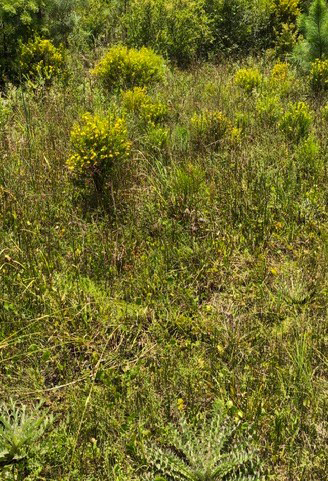
by Nancy Jones
Jackson County
by Christie Andreason
The county is completing its first summer mowing cycle, with county mowers utilized in place of a contract. While we haven’t designated additional wildflower roads in the county, it appears that most county roads being mowed to provide an 8- to 16-foot safety strip, leaving the backslope growing “wild.” We’ve had a lot less complaints from locals about the state of the roads, so I am very hopeful to work on an official designation in coming months.
I spent a good portion of the spring and summer revisiting some of my favorite wildflower roads to inventory what was there. I was pleased with what I saw, particularly at Hinson Conservation Area. A healthy variety of common flowers have been in bloom since March, hosting an abundance of pollinators.
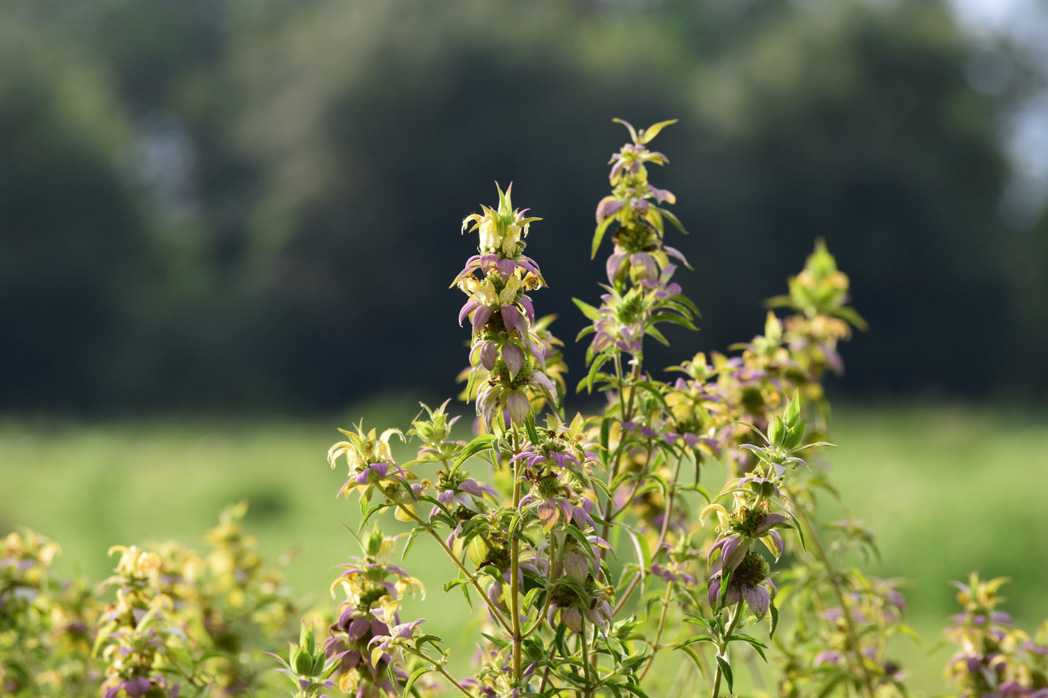
One of the things I have noticed and will likely take as a recommendation for the wildflower routes is how much easier (and usually safer in regards to traffic) wildflower viewing and photographing is on some of our smaller county roads. The above Spotted beebalm was found on a dirt county road in north Jackson County. These dirt roads typically border crops, so pollinators seem to be particularly common as well. Maintenance becomes almost irrelevant as county road crews do not do much to maintain past the ditches of unpaved roadways.
Wakulla County
This summer the native plant landscaping at Sopchoppy’s Depot Park delighted park goers with numerous colorful wildflowers and abundant butterflies. Particularly impressive were the massed blooms of Leavenworth’s tickseed (Coreopsis leavenworthii).
Despite the summer heat, volunteers have continued to weed beds, expand plantings and add new species. Angle pod milkvine (Gonolobus suberosus) and three species of milkweeds were planted early in the summer, and 45 Pinewoods milkweed (Asclepias humistrata) await planting this fall.
Several volunteers continue to sprout native wildflowers from seeds. They added more Scarlet rosemallow (Hibiscus coccineus), Lanceleaf coreopsis (Coreopsis lanceolata), Mohr’s coneflower (Rudbeckia mohrii), Wild white indigo (Baptisia alba) and Blue mistflower (Conoclinium coelestinum) to the park over the summer.
The Sarracenia Chapter of the Florida Native Plant Society recently purchased a variety of native plants at bargain prices from a nursery going out of business. Members are excited to add these plants to the park this coming fall, including Northern spiderlily (Hymenocallis occidentalis), Loblolly bay (Gordonia lasianthus), Elderberry (Sambucus nigra subsp. canadensis), Winged sumac (Rhus copallinum) and Hooded pitcherplants (Sarracenia minor).
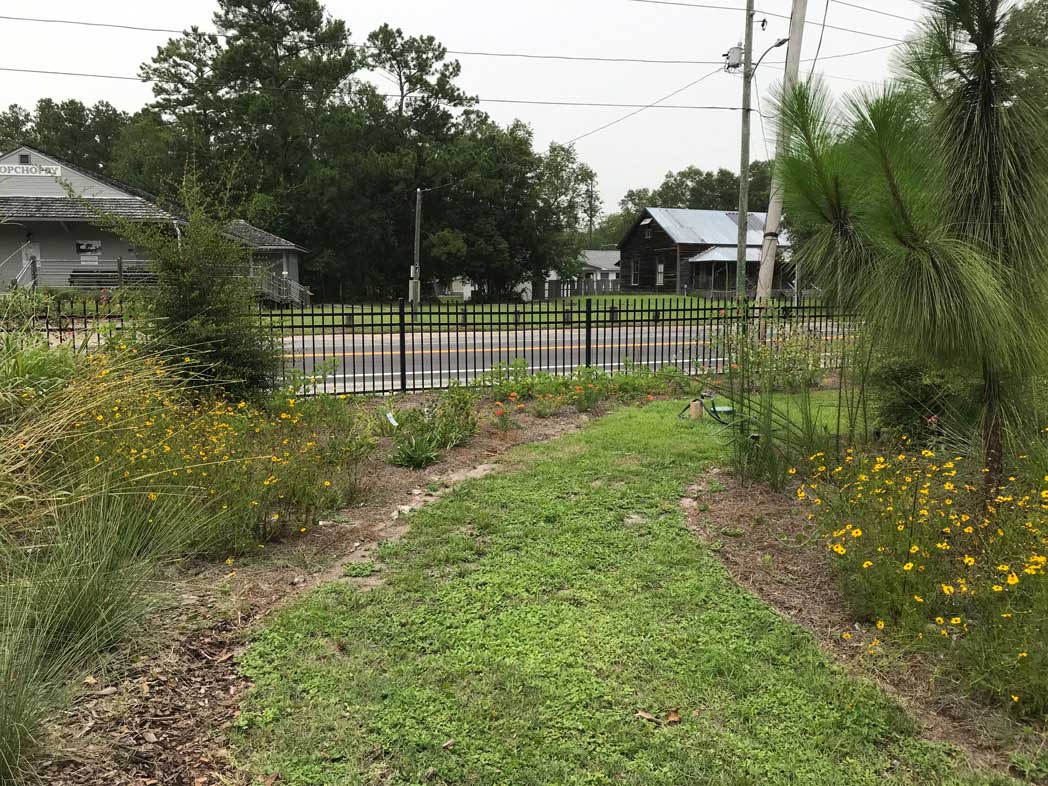
Walton County
A new group of wildflower advocates is emerging in Walton County, and a pair of energetic friends, Barbara Young and Marissa Benton, have agreed to co-lead efforts to reboot the county wildflower program.
Barbara says, “The Walton County Master Gardeners voted to proceed with this roadside wildflower project and have developed a logo and a Facebook page — please like us! We have reached out to several local groups who are interested in helping. They are The Freeport Town Planters, Walton Outdoors, Choctawhatchee Basin Alliance, three garden clubs, and individuals who are eager to get started. Thanks to guidance from Liz Sparks and [Santa Rosa County Master Gardener] Suzanne Spencer, we look forward to saving our native roadside beauty in Walton County.”
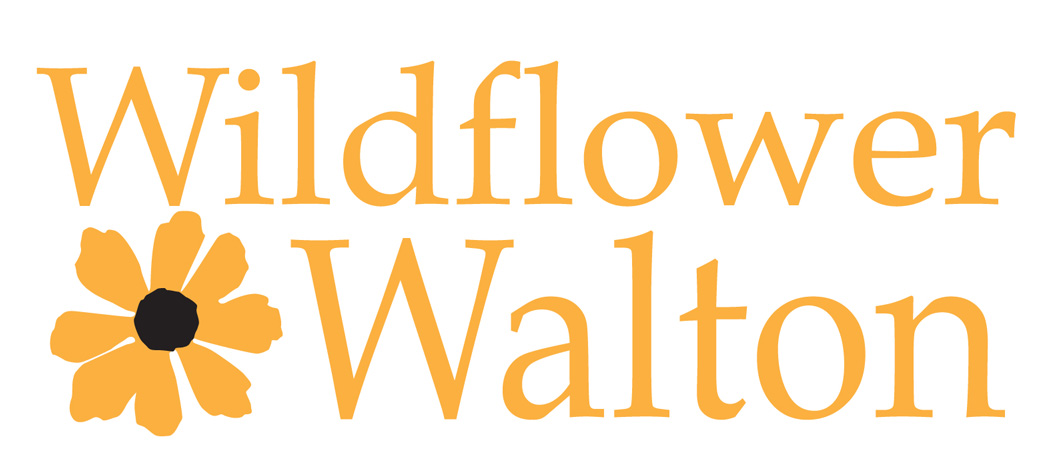
Washington County
by Heather Lopez
Unfortunately, our wildflower projects were put on hold due to the ongoing construction on S.R. 77. We identified two roadside wildflower loop trails that include a segment of S.R. 77 but haven’t gotten the county’s approval to add them to the wildflower program. The county has been very focused on Hurricane Michael FEMA projects and COVID. It is hoped that the conversation can start again after the first of the new year.
I am hoping that they will finish construction this year so we can apply for the FDOT Beautification Grant next fall. That would put implementation of the roadside wildflower trails in spring 2022. After construction is complete on S.R. 77 we could look at producing a map and guide to our wildflower driving loops.
North Florida Wildflower Alliance updates
Alachua County
The Foundation recently expanded efforts to build roadside pollinator habitat into the 18 North Florida counties that comprise FDOT District 2.
Notably, Alachua County has initiated a robust wildflower program that includes 405 roadside acres of naturally occurring and planted wildflowers. A dynamic group of volunteers will begin monitoring fall blooms to ensure proper management with reduced mowing of the backslopes. It’s exciting to see this group emerge, and we look forward to what they will create in the future.
Big Bend Wildflower Survey
The Florida Wildflower Foundation will begin a four-day survey of fall roadside wildflowers of the Big Bend region on Oct. 8. The survey is the second of three seasonal expeditions to find roadside wildflowers. The project’s goal is to build a network of native wildflower habitat along roadsides to host insect pollinators as they travel between farm fields and forests. The effort, supported by a grant from the Duke Energy Foundation, includes sites in Dixie, Gilchrist, Hamilton, Lafayette, Levy, Madison, Suwannee and Taylor counties.
Dr. Jeff Norcini of OecoHort LLC, Tallahassee, is performing the surveys, which examine FDOT-maintained federal and state roadways for naturally occurring wildflowers and native plant remnant communties.
